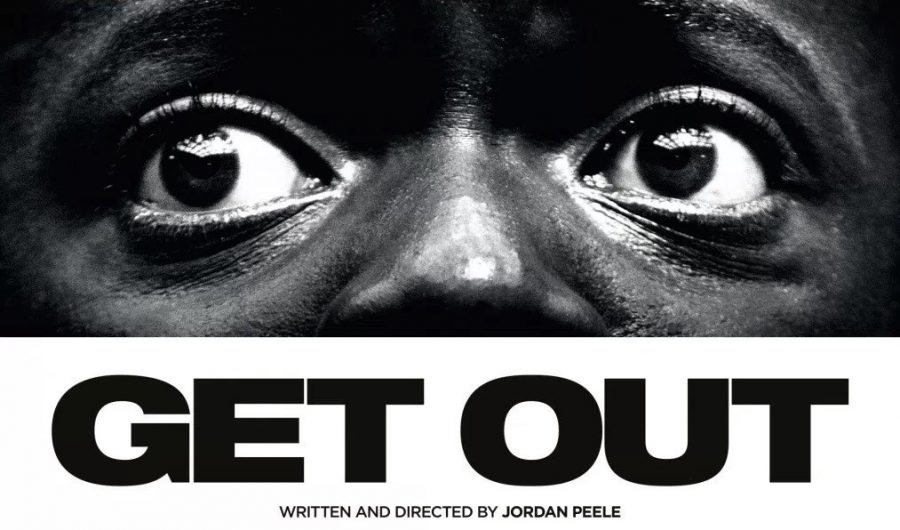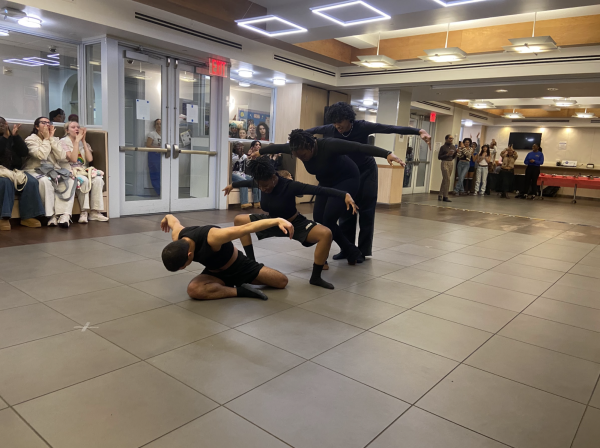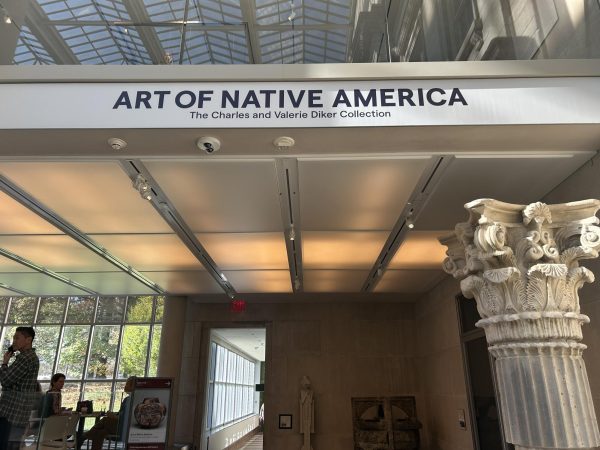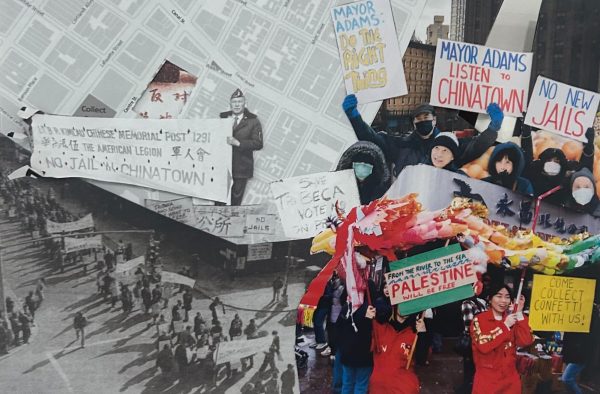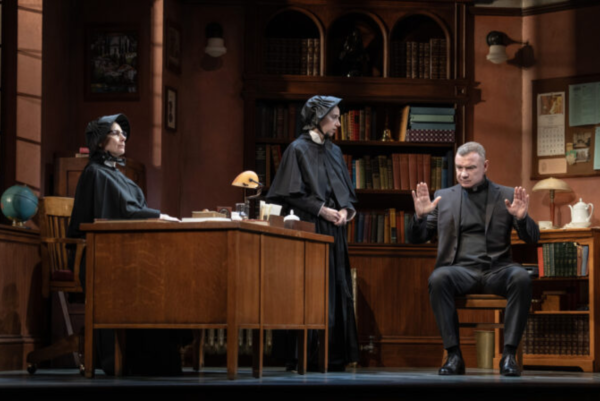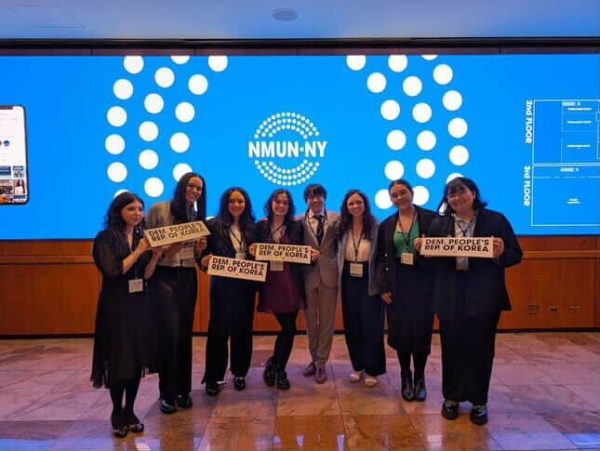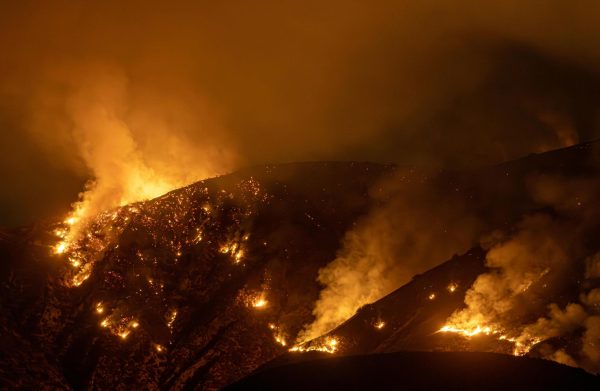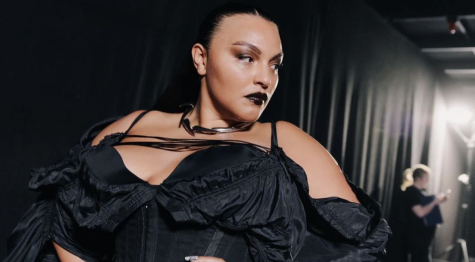The Importance Behind Black Horror Films
Reading Time: 11 minutes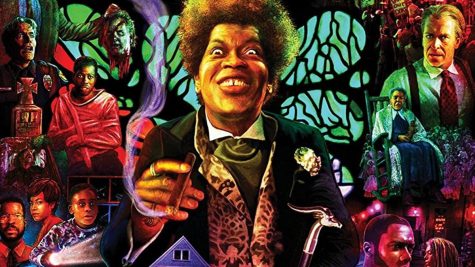
Police corruption, racism and domestic abuse wrapped into four short stories do not begin to scratch the surface of the everyday horrors Black Americans face. Shown in the film Tales From The Hood, a 1995 horror anthology produced by Spike Lee, is one of many psychological horror/thrillers produced by Black filmmakers portraying the importance of such films.
Tales From The Hood encapsulates four short stories: Rogue Cop Revelation, Boys Do Get Bruised, KKK Comeuppance and Hardcore Convert. Each story goes into detail about the challenges Black Americans face that are not seen or portrayed enough in the media.
Rogue Cop Revelation is the first story to be shown. It depicts how police who vowed to serve and protect people, still treat Black Americans with absolutely no respect. This story goes deep into how police departments nationwide can be the culprit of corruption rather than the criminals they chase.
The first story follows corrupt police officers who are selling drugs and a “prominent black-figure” is trying to rid the city of corrupt police officers like them. Eventually, one thing led to another with abuse of power on the cops part with treating the prominent figure as someone less than human all because he has a different color skin than them and all he wanted was to rid of the corrupt cops in the city to make the city safer.
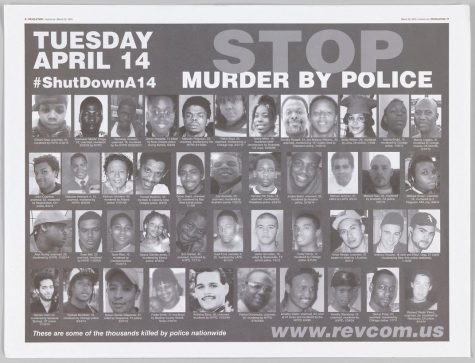
The corrupt cops drove the unnamed “prominent black-figure” to an isolated location to beat him up more and pumped him full of drugs, so when the police found his body they wrote him off as a hypocrite. The heinous climax of the story is once the black cop actually found out what happened, his life propelled him into a downward spiral making him overwhelmed with guilt about what happened and wishing he would have done more. He starts to hear the spirit of the “black prominent figure” calling him from the grave asking him to set things right, he keeps repeating “BRING THEM TO ME.” He does what he asks those very same cops to the spirits’ grave and the spirit enacts his revenge in a twisted cold-hearted way just like how they killed him. This particular story brings attention to how police brutality is a problem then and still a huge problem now.
According to Nature Research Journal, about 1,000 civilians are killed each year by law-enforcement officers in the United States. By one estimate, Black men are 2.5x more likely than white men to be killed by police during their lifetime. In an additional study, Black people who were fatally shot by police seemed to be twice as likely as white people to be unarmed.
The reality of the situation is that this incessant racism has been occurring for centuries and one that black film-makers have to show the true horror behind it in their films to get the attention of how important this issue really is.
“Boys Do Get Bruised” is the second story to be told and one telling the unfortunate horrors of how domestic abuse is not widely shown among black couples. This story focuses on a single mother who has a little boy in elementary school. He is a quiet, reserved and shy kid that keeps himself and does what he is supposed to. Throughout the short story, you notice he comes into school with bruises that are not from normal playing and that he is bullied by his classmates almost every day. At night, we see that a monster of some sort comes into his room before he goes to sleep and abuses it every night. That same monster also hits and abuses his mom. He is sacred to the death of this monster and when asked about it, he refers to it as a “monster.” As a coping mechanism, he draws about the people who hurt him and without knowing it when he destroys that drawing somehow it affects the person in the drawing. You see this happen to the bully and one night the little boys’ teacher goes to his home to share his concerns. From the start, you see the hesitation in accepting help from the mom and dismissing the drawings her son makes like there is no way out of there can’t get out of their situation.
Finally, when the monster comes home, the audience finds out that the monster was the mother’s boyfriend all along. His mother, who is trapped in this abusive relationship, only stays because he provides for their family.
The son finally had enough. While the boyfriend is abusing his mom and the teacher, he gets ahold of his drawing and crumples it, causing the boyfriend to die in a very graphic way. They are finally free of his clutches and to cover up the mess they light the paper on fire. This story is one that shows the true monsters in life are people.
In the United States, Blacks are more likely to experience domestic violence where various factors come into play to tell us why they can’t get the help they need or get out of the situation. Black Women are more afraid of what would happen if they did try to get out of the situation or the little to no help they will receive. They are afraid that being a woman of color in America that when trying to get help from law enforcement, there is this level of distrust from law enforcement because America’s past history is not protecting and serving everyone. Feeling like when they do reach out for help they will be a backlash because of the color of their skin, unsure if the justice system will actually protect them, or even receive pressure from their communities to keep their matters quiet. According to VeryWell Mind, “In fact, according to the Violence Policy Center, Black women are disproportionately impacted by lethal domestic violence. For instance, in 2018, Black women were murdered by men at nearly three times the rate as white women. That represents a rate of 2.85 per 100,000 compared to 1.03 per 100,000.” Not only must they deal with racism and stereotyping when they try to receive help, but black women are more than often arrested for defending themselves against the abuser. The mom in Tales From The Hood, felt like she had no choice but to stay in an abusive relationship because she felt like she wouldn’t get the proper help she needed for her and her son. One that is true for many black women in domestic violence that happens every day.
“KKK Comeuppance” is the third story about how a political white figure who is highly overconfident, racist and a one-time member of the Klu Klux Klan is now running for governor. There are many protests against him running outside his campaign house, he plans to ask his office for when he wins office. The particular campaign house is one that used to be a plantation house previously used and owned by his ancestor who was a ruthless slave master. This caused an uproar in the local community of how disrespectful he was to the slaves who died there and not taking into account what the community needed and not catering to his own personal agenda.
Throughout the short story, he disrespects the plantation house even further, further disrespecting the slaves whose souls were at rest there. He notices this painting of the slaves whom his ancestor killed and the hoodoo priestess who put the souls of the slaves into dolls to allow them to rest and rumors say the dolls are still in the house. The politician starts to see one of the dolls from the painting pop up in weird places after his partner died from the falling stairs, this causes him to get paranoid. He goes back to the painting to see the doll missing from the painting and doesn’t want to believe it, but arms himself with a gun yelling slurs and profanities. You start to see more and more dolls missing from the painting which makes you realize that the dolls are coming back to life and messing with this political figure because his presence there disrupted their rest. They enact their revenge on him finally after he lastly disrespected the hoodoo priestess.
This particular story is one that tells of how a politician like this one being an ex-Klan member, who is still openly racist, is something that tells the audience how African-American folklore should be emphasized to the community. Not just taken lightly and dismissed, but let them be known that they shape communities and need to have respect in a way that tells those communities that people in power acknowledge this. Meaning politicians take certain steps to show this to the community in one way or another, to show they mean no disrespect and actually care about how those communities believe in and pay homage to the culture. You see tons of examples of politicians moving up in power who are blatantly racist towards the black community.
Raymond Santana, Kevin Richardson, Antron McCray, Yusef Salaam, and Korey Wise were all young boys who wrongly convicted of raping a white female jogger, Trisha Meili, in Central Park in 1989. Before and after their trials, former president Trump made it known to this day and standing by his opinion even after they were all found innocent said according to USA Today, he believed the city is “ruled by the law of the streets, as roving bands of wild criminals roam our neighborhoods, dispensing their own vicious brand of twisted hatred on whomever they encounter… these muggers and murderers.”
“Hardcore Convert” is the last and final story that sheds light on the rising gang violence at the time. This sheds light on how gang violence costs so many young black lives over something so dangerous it is distracting them, while lives are being lost.
This story follows a gang member who goes by the name “Crazy K.” Crazy K is known for having no mercy and turning on people who are close to him to run his “business” properly. He gets into a shootout with three other rival gang members and you think he is going to die, but the police show up and see him in jail given a second chance by a program. That if he completes this particular program he will not go back to jail, and then the program was not your particular program.
This one gets inside your mind and shows the truth you need to face and hear, giving you a choice to be better. The program showed him what he was doing with all this gang violence that he was taking lives unnecessarily adding to the body count that others are doing because of ignorance and hate. The program tried to show him this in a way that he was seeing ghosts and he didn’t want to believe it. He didn’t want to make the choice to get better, and because of that, not taking the choice resulted in him dying. It is then shown to the audience that the program he went through was all in his head, acting as limbo as to whether he lived to be a better person or not change and die. He made the choice to not change and we see him ding in the same spot he was shot at before we saw him go into the “program.” The message shining through is that the black community then and somewhat still now needs to rise above and see what change is needed to benefit our future.
Gang violence has risen over the years, especially in large cities. These gangs with young black men are starting to become more and more violent. Making it easier for more members to participate in more illicit activities like drugs, firearms, et cetera. In 1994, gang members were suspects or victims in about 40% percent of all homicides in Los Angeles County. The outside causes are also leading to so many young black lives lost and not having rights because black men and women are being seen and continue to be seen as less than human. That together, the black community needs to clear themselves from this fog of killing each other because of rival gangs, but also wake up to the fact who is actually responsible for all this death and carnage and what needs to be changed. The people in power, Klan members, and anybody blinded with hate are killing, hanging, beating, and torturing black Americans trying to keep the community blind to the point where they do not realize the black community is killing each other off, doing the job for them basically. That they want the black community to keep killing each other off and not wake up to ban together to stop this issue for a better future. Real progression is important as much as it is now, black film-makers are getting the message out there in any way that’s possible.
While Tales From The Hood came out in 1995, a more recent re-emergence of black horror has come to light in film and television. In this new age of storytelling, white characters aren’t the default narrative, and with that comes many new nuanced topics of discussion.
The idea of a “default narrative” with the default being white, straight, men as the protagonist is something seen way more frequently than just in novels and movies. The media often hides that prejudice they have of seeing people of color in these powerful protagonist roles by calling something “historically accurate.” This brings up this new question of what exactly is historically accurate, and who sets that rule in place? Without asking that question and going against the bounds of racial stereotypes in film, the film industry has allowed the casting of Black American’s to be extremely skewed and prejudiced.
Commonly, the only movies featuring a predominantly black cast are usually historical movies. Black characters in the film industry have traditionally been portrayed in negative, dehumanizing ways and while it is important that the story of slavery is carried on so that history doesn’t repeat itself if we don’t normalize primarily black casts Black Americans will only be viewed as slave characters.
The brilliant producer and director, Jordan Peele, is a great example of how Black Americans can be positively portrayed in the horror genre while also taking on important topics. In an interview with The Hollywood Reporter, Peele expressed that, “I don’t see myself casting a white dude as the lead in my movie.” He continued, “Not that I don’t like white dudes, but I’ve seen that movie.”
With Jordan Peele’s movies, Get Out and Us, Black characters are at the forefront of the story and the monster they’re fighting is often racism. Even when it’s not blatantly stated, race is the underlying battle. The same goes for the horror drama, Lovecraft Country. The series is about a young black man who travels across the segregated 1950s United States in search of his missing father, learning of dark secrets plaguing a town. Even when the show tackles completely fantastical issues in a fantasy-based realm, race is still worth being mentioned.
“I don’t know why anyone would want to limit their exposure to great art and storytelling!” Film studies Professor Noelle Griffis from Marymount Manhattan College said in an interview. “Film can help us learn about cultures, identities, and experiences outside of our own, and this is important, but I also don’t think that we should limit our appreciation of Black film to an educational or sociological context. For example, Get Out expresses micro-aggressions and historical trauma in ways that Black audiences can recognize and non-Black audiences may learn from. But it’s also great filmmaking! So people who love film, regardless of their personal identity or demographic, should also watch it for the reasons we study, analyze, and enjoy movies like The Shining.” Prof. Griffis adds.
So, why is race so congenial with black horror?
Well, the answer is sad but simple: Being Black in America can sometimes be a nightmare. Racism and other racial issues can feel like something that Black Americans need to survive. So black horror as a genre creates a story about endurance and fighting against issues that are much less fantastical and much closer to reality.
“Horror is about processing, or at least probing, a culture’s traumas, so it’s unsurprising that contemporary American horror is exploring traumas rooted in slavery, lynching, and racism generally, with white supremacy as the underlying monster that needs to be destroyed.” Griffis continues, “I think this theme has always been present in the U.S. horror and sci-fi genres. There are Twilight Zone episodes that were allegories of mob mentality and racism. But films that are more direct precursors to the films include Night of the Living Dead (Romero, 1968), Candyman (Rose, 1992), and even Burnett’s To Sleep With Anger.”
Representation in film and the reemergence of black horror as a genre is important in terms of expanding our horizons and one’s knowledge of film., If we fail to do that, we’re all just ignorantly going along with what we’re comfortable with. There’s a real privilege in that. In being able to say “this is the world that I imagine in my head and no one can change my mind about.” Even more than that, it’s extremely boring because there’s plenty of great Black films out there just waiting to be explored.
Griffis provided a list of films by black filmmakers that unfortunately have only released one feature or produced a few short films because of the challenges that Black women, in particular, have had in getting funding, as well as a resistance from the white male-dominated film industry.
“I’m thinking of Julie Dash (Daughter of the Dust), Kathleen Collins (Losing Ground) and Leslie Harris (Just Another Girl on the I.R.T). However, there’s currently a new generation of filmmakers like Garrett Bradley, Mati Diop, and Nuotama Frances Bodomo who are getting recognized for really innovative films, so that’s exciting. I also highly recommend the films of Charles Burnett, especially Killer of Sheep and To Sleep with Anger.”
If you’re looking to expand your horizons on black filmmakers and black horror as a genre, many of the films mentioned above are available to MMC students through Academic Video Online (AVON) under databases A-Z (check out the Milestone Film collection) and several more are available on the media center’s library streaming site.
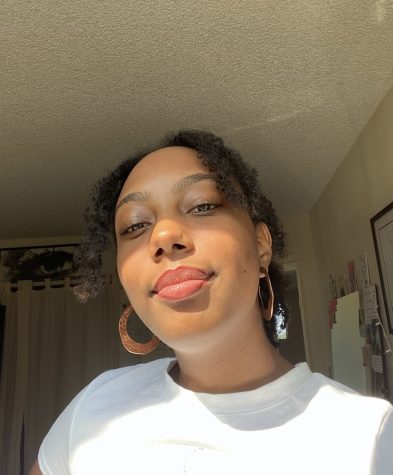
Rayiah Ross is a senior majoring in digital journalism and minoring in creative writing. She has a focus on cultural criticism and social commentary.
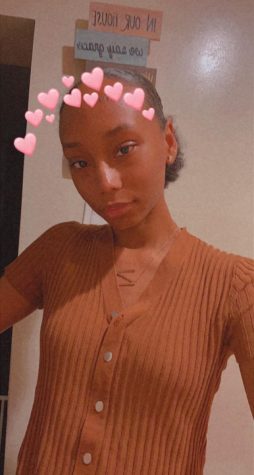
Najla Alexander is the Features Editor and Crime Reporter for The Monitor. She is Majoring in Digital Journalism and Minoring in Forensic Psychology. Her...

